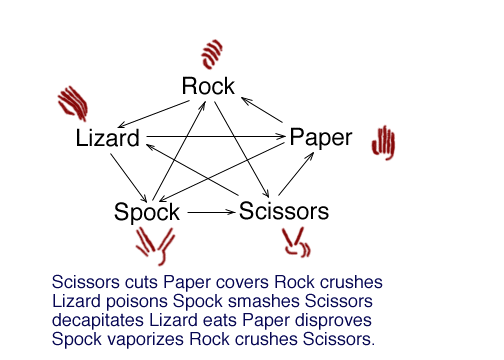| This is a course page of David Casperson |
|
CPSC 370: Functional and Logic Programming (2011)
Homework Questions now Due
Due Friday, October 7, 2011.
- Determine what the order datatype
is. Explain how
type α comparator = α * α -> order ;
corresponds to the Java™ concept of Comparable. - Write a function isSortedwith signature α comparator -> α list -> bool. Test it. (You may wish to note that there are builtin functions Int.compare and String.compare that have the types int comparator and string comparator respectively.)
- Write a function insertwith signature α comparator -> α * α list -> α list that inserts an item into a sorted list. Test it.
- Write a function insertionSortwith signature α comparator -> α list -> α list that insertion sorts a list. Test it. Re-code this beautifully in one line.
Due Wednesday, November 02.
-
Given
datatype α tree = E | T of ( α tree * α * α tree )write a tail-recursive function that sums the values of an int tree. -
Given
datatype choice = Rock | Paper | Scissors | Spock | Lizard ; datatype result = win | lose ;write something like a partial function from choice * choice to result that plays “rock paper scissors Spock lizard” correctly.
Maximum points for cutely coded solutions.
Due Monday, November 07.
-
Unicode unifies most of
world’s characters by giving each character a code
between 0 and 2097151 (221-1), the first 128 of which are
identical to ASCII.
UTF-8 is a way to convert a series of Unicode codes to bytes. There is a nice FAQ describing UTF-8 and Unicode.
- Write a function to convert a list of Unicode values into a corresponding UTF-8 values.
- Combine the above with CharVector.fromList and Char.chr to get a function that converts an int list of Unicode codes to a CharVector.vector (aka a string).
- Use the TextIO.openOut, TextIO.output, and TextIO.closeOut functions to write appropriate test strings to a text file. Try displaying the resulting file on a UNIX machine.
- Scheme Homework.
-
Using the relations

write a Scheme program to calculate e to the x. Compare your results with the builtin exp function.Note that
 .
.
- Look up the definition of the flatten function, and write and test your own definition.
- Look up the definitions of the special forms (and …) and (or …). Explain why these are syntactic sugar for other Scheme forms.
Due.
-
Determine what the combinator
S(S(KS)(S(KK)S))(KK) does.Hint: The easiest way to unravel this is to un-apply η-reduction. That is, replace
S(S(KS)(S(KK)S))(KK) with
λ f.S(S(KS)(S(KK)S))(KK)(f) , apply the combinator rules that you can. Then apply this trick again a couple of times to the body of the simplified
λ f.S(S(KS)(S(KK)S))(KK)(f) expression.If you have done things correctly, you should end up with short λ-expression of three variables.
- Write a Prolog predicate constant/1 that unifies with mathematically constant expressions, that is: numbers; sums, products, and so on, of constants; special constants like pi and e; and functions applied to constants. (You may wish to look at the functor/3 and arg/3 builtin predicates.)
- Write a prolog predicate deriv/3 with argument pattern deriv(+Term,+MathVar,-Result) that applies standard first-year calculus derivation rules. The predicate should support application of the chain rule.





